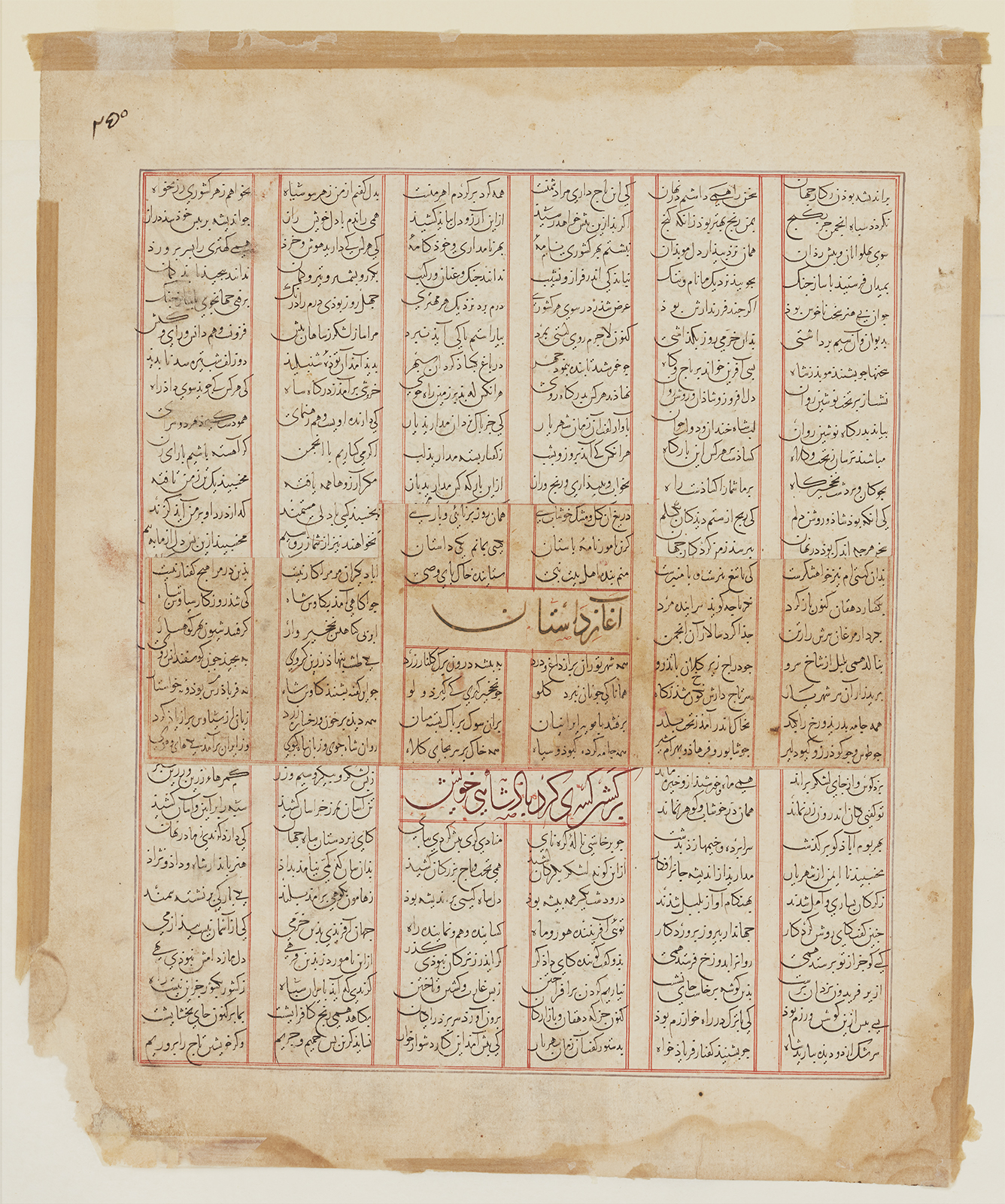Click on the image to zoom
Battle Scene
Composite folio from a dispersed copy of Firdausi’s Shahnameh (Book of Kings)
- Accession Number:AKM31
- Place:Iran, Shiraz
- Dimensions:38 x 30.5 cm
- Date:741 AH / 1341
- Materials and Technique:Ink, coloured pigments and gold on paper
Composed more than one thousand years ago by the poet Abu’l-Qasim Firdausi (935–1020), the Shahnameh (Book of Kings) narrates the story of Iran and its peoples from the dawn of time until the arrival of Arab Muslims in the mid-7th century AD. Its verses recount countless tales of warfare, most notably battles waged between Iran and Turan (Central Asia). In this composite folio AKM31 (folio 250 recto), a pair of warriors attack one another on horseback, while two other riders gallop on the sidelines. Simple in composition, the scene expresses the ferocity of battle through the white dust raised by the horses’ galloping feet and the white clouds rolling in the sky above. The picture plane is “stepped up” in the centre, giving the main protagonists a larger scale than the other two riders. This scale accentuates the differences between the warriors, whose armour (and that of their charging steeds) is finely detailed.
Further Reading
Usually the text surrounding or flanking a Shahnameh illustration makes it possible to identify the specific scene and to give it a title. In this case, however, the illustration of a battle has been cut out from its original text folio and pasted onto another text folio from the 1341 Shahnameh. This probably occurred in the early part of the 20th century, when the manuscript was taken or sent from Iran and its individual folios began to appear on the art market in Europe and the United States. The upper strokes of black letters rising up from the top of the painting provide evidence of this alteration, as does the darkened imprint of the illustration which is clearly visible on the reverse (verso) side of the folio.
The verses on the folio in its current (and composite) form narrate the start of the reign of the historical monarch Khusrau I, called Kisra Nushinravan (or Nushirvan and Anushirvan) in the Shahnameh. Khusrau ruled Iran’s Sasanian dynasty from 531 to 579 AD and is depicted in the illustration “Kisra Nushinravan’s fourth banquet for Buzurgmihr and the archimages” (AKM36). The lower right margin of this folio is stamped with a circular seal impression, now only partly visible, that has been dated to the 15th century. The Arabic legend reads al-wathiq bi’l malik al-ghani or “Trusting [in] the all-sufficing king.” These words probably would have been followed by a name, perhaps “al-Husayni,” to rhyme with al-ghani.
— Marianna Shreve Simpson
Note: This online resource is reviewed and updated on an ongoing basis. We are committed to improving this information and will revise and update knowledge about this object as it becomes available.




